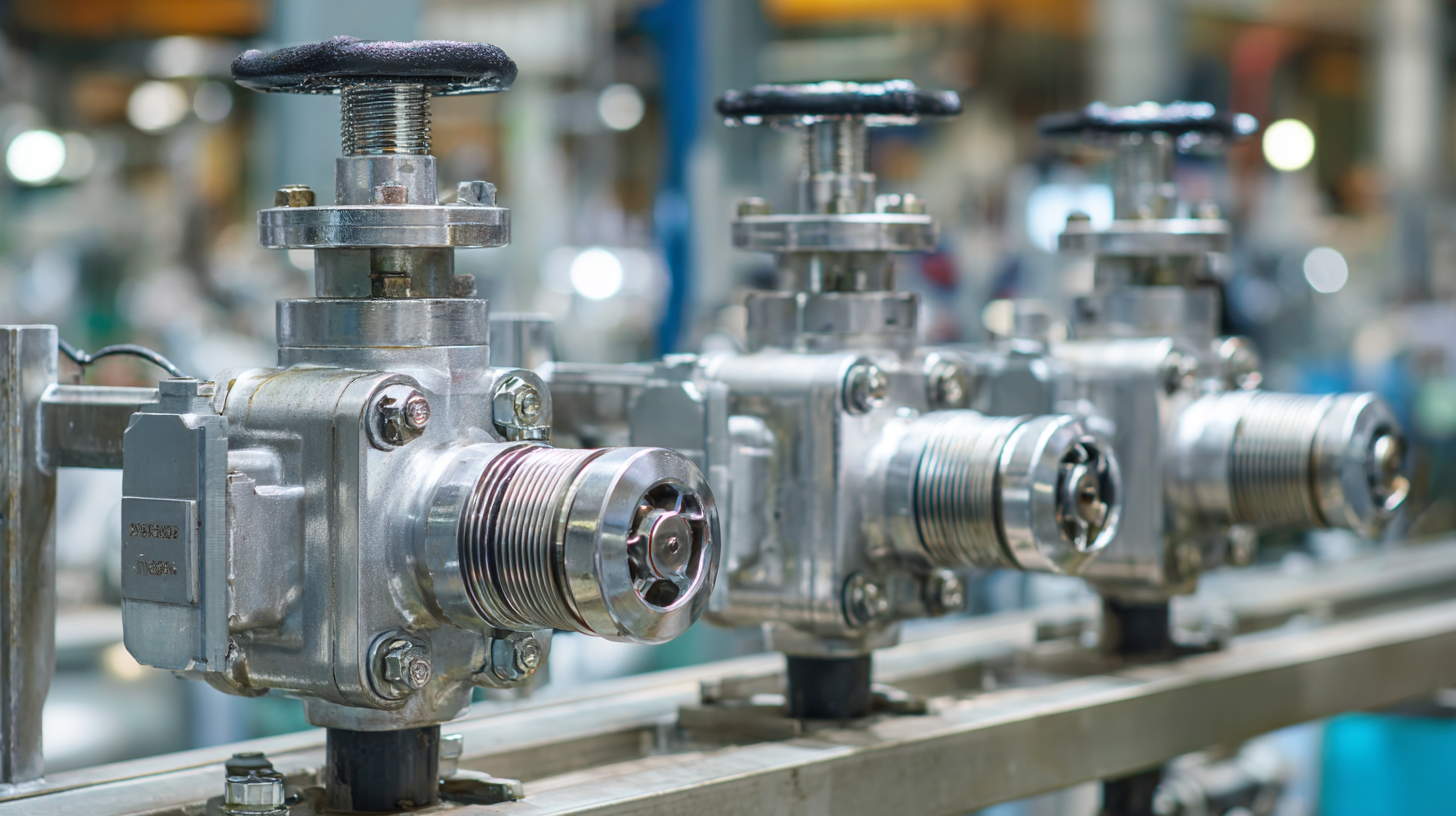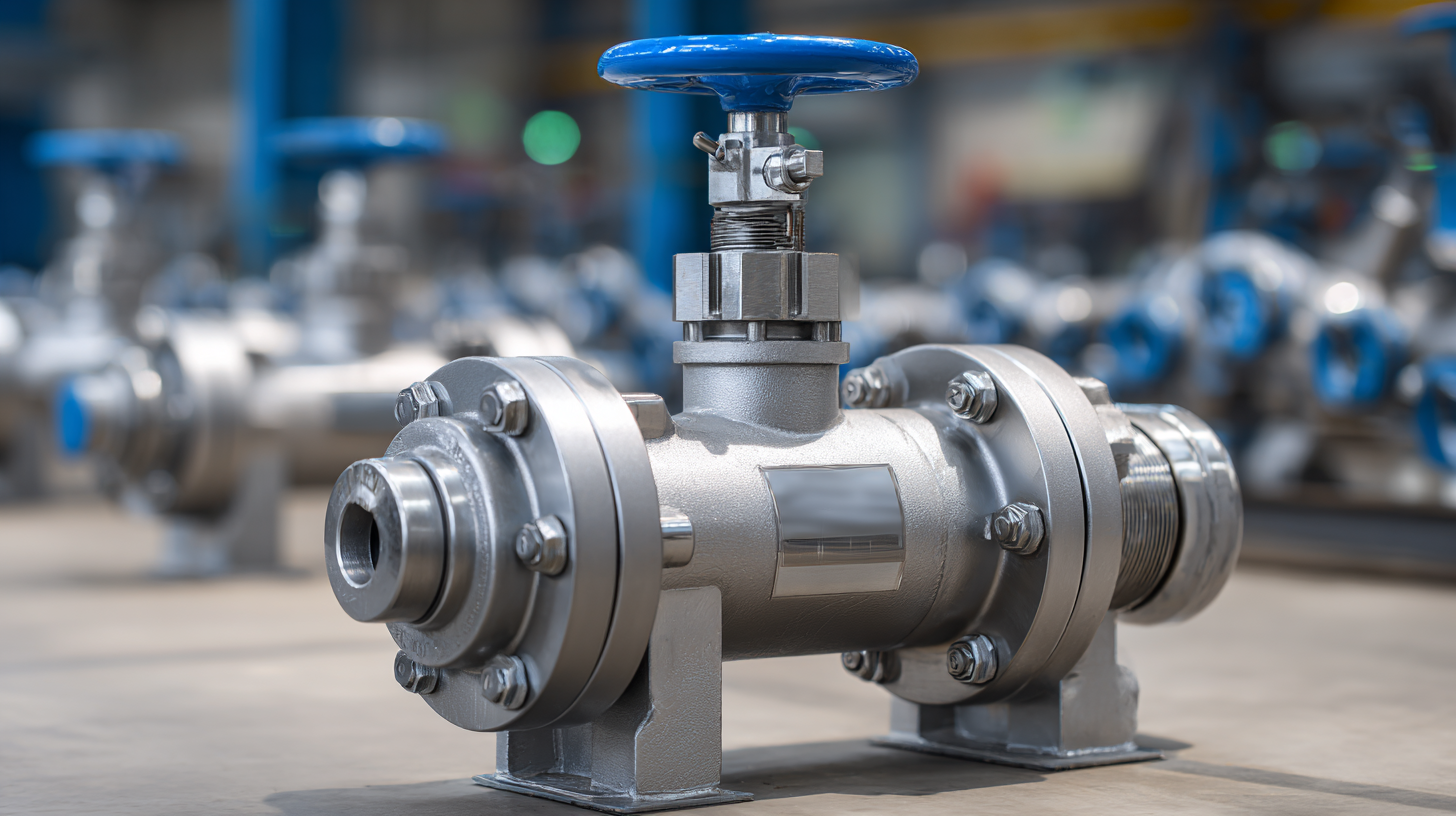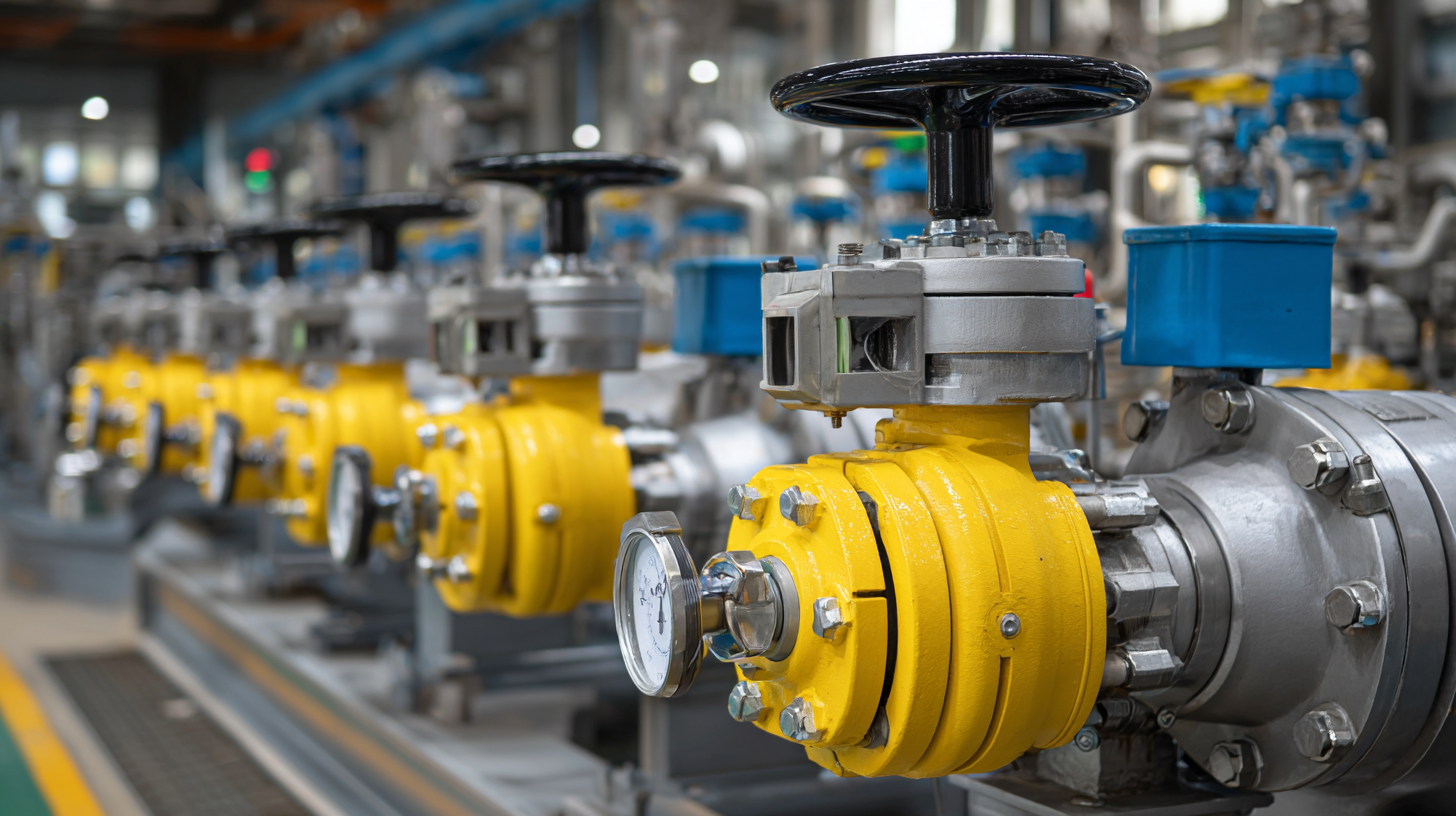Exploring Key Specifications for the Best Industrial Control Valves and How to Choose the Right One
In the dynamic landscape of industrial automation, industrial control valves play a pivotal role in optimizing processes across various sectors, including oil and gas, water treatment, and chemical manufacturing. According to a recent report from Markets and Markets, the global industrial valves market is projected to reach USD 90.2 billion by 2025, growing at a compound annual growth rate (CAGR) of 6.6% from 2020. This surge reflects the increasing demand for effective flow control as industries focus on enhancing operational efficiency and sustainability. As businesses progress towards integrating smart technologies, understanding key specifications for selecting the right industrial control valves has never been more crucial. This blog aims to explore these specifications and guide you through the essential criteria to consider when choosing the most suitable industrial control valves for your specific applications, ensuring both reliability and performance in an ever-evolving industrial environment.

Understanding Industrial Control Valves: Types and Applications
 Industrial control valves play a crucial role in various sectors, regulating flow and pressure in pipelines. Understanding the different types of industrial control valves, such as globe, gate, ball, and butterfly valves, is essential for optimal application. Globe valves, for instance, are ideal for throttling services, while ball valves excel in applications requiring quick shut-off due to their low resistance. Each type has unique characteristics that suit specific industrial requirements, whether in water treatment, chemical manufacturing, or oil refining.
Industrial control valves play a crucial role in various sectors, regulating flow and pressure in pipelines. Understanding the different types of industrial control valves, such as globe, gate, ball, and butterfly valves, is essential for optimal application. Globe valves, for instance, are ideal for throttling services, while ball valves excel in applications requiring quick shut-off due to their low resistance. Each type has unique characteristics that suit specific industrial requirements, whether in water treatment, chemical manufacturing, or oil refining.
When selecting the right industrial control valve, several factors must be considered. First, assess the fluid properties, including viscosity and temperature, as these can significantly impact the valve's performance. Second, think about the installation environment—valves in corrosive settings may require specialized materials to prevent damage.
Tips: Always consult manufacturer specifications to compare the performance ratings of different valve types. Additionally, consider the control system integration, as some valves may need additional actuation equipment to ensure precise operation. This can streamline processes and enhance overall efficiency, contributing to successful operational outcomes.
Key Specifications to Consider When Choosing Control Valves
When selecting industrial control valves, it is essential to consider several key specifications to ensure they meet the operational requirements of your specific application. First and foremost, valve type is critical; options such as ball, globe, and butterfly valves each serve distinct purposes and offer different advantages in terms of flow regulation and pressure drop. Additionally, understanding the valve size and connection type is crucial for compatibility with existing piping systems. A well-matched valve not only facilitates seamless integration but also optimizes performance.
Another important specification to consider is the valve material, which directly impacts durability and resistance to corrosion or temperature variations. Industrial environments often expose valves to harsh conditions, making it vital to choose materials that can withstand these challenges. Furthermore, factors like actuation method—manual versus automated—play a significant role in the operational efficiency and control offered by the valve. Lastly, the flow characteristics, including rangeability and Cv value, should align with the specific flow conditions of your system to ensure optimal performance and reliability. Taking the time to evaluate these specifications will lead to a more informed and effective valve selection, ultimately enhancing industrial operations.
How Material Selection Affects Valve Performance and Longevity
When it comes to industrial control valves, material selection plays a critical role in determining the overall performance and longevity of the valve. Just like in the medical field, where advancements in polymeric materials have transformed heart valve replacements, the same principles apply to industrial valves. For example, the development of biostable polymers in heart valve repair ensures durability and compatibility with biological tissues, which highlights the importance of selecting materials that can withstand various operational stresses in industrial settings.
The success of innovative designs, such as fish swim bladders used as valve leaflets in transcatheter aortic valve replacements, demonstrates how unconventional materials can enhance performance. This approach not only improves fatigue resistance but also contributes to better hemodynamics, which is essential for optimal valve function. Thus, when choosing the right industrial control valve, engineers must prioritize materials that not only meet their specific service conditions but also provide robustness over time, echoing the lessons learned from other fields like automotive engineering, where the use of composite materials is gaining traction for improved performance and efficiency.
Evaluating Manufacturer Reputation and Quality Standards in the Industry
When selecting the best industrial control valves, evaluating the reputation of manufacturers is paramount. A company's history, market presence, and testimonials can reveal a lot about their reliability and the quality of their products. Established manufacturers often have a track record of providing durable and efficient valves that comply with industry standards. Researching customer reviews, case studies, and field performance reports can provide crucial insights into the manufacturers' longstanding commitment to quality and service.
Quality standards play a pivotal role in the production of industrial control valves. Manufacturers who adhere to rigorous industry certifications demonstrate their dedication to excellence. ISO certifications, for example, ensure that products meet international benchmarks for quality and safety. Additionally, understanding the materials and techniques used in valve production can highlight a manufacturer's attention to detail. By aligning with manufacturers who prioritize these quality standards, businesses can mitigate risks associated with valve failures and downtime, ensuring smooth operational processes.
Exploring Key Specifications for the Best Industrial Control Valves and How to Choose the Right One
| Specification | Description | Importance | Quality Standards |
|---|---|---|---|
| Material | Common materials include stainless steel, brass, and plastic for corrosion resistance. | Ensures durability and compatibility with media. | ISO 9001, ASTM standards. |
| Size | Available in various sizes to accommodate flow requirements. | Critical for flow control efficiency. | ASME standards for pipe fittings. |
| Pressure Rating | Indicates the maximum pressure the valve can handle. | Ensures safe operation in high-pressure systems. | API 6D, ANSI standards. |
| Seal Type | Various seal designs such as soft, metal, or composite materials. | Affects leak tightness and maintenance needs. | FDA regulations for food-grade applications. |
| Actuation Type | Manual, pneumatic, electric, or hydraulic actuation options. | Influences operational efficiency and automation level. | CE marking for safety compliance. |
| Flow Coefficient (Cv) | A measure of the valve's capacity to allow flow. | Essential for selecting valves for specific flow rates. | ISA standards for sizing and selection. |
| Temperature Range | Operating temperatures can vary widely. | Important for material selection and valve functionality. | PIP standards for temperature applications. |
Innovative Technologies Enhancing Control Valve Efficiency and Safety
The advancements in innovative technologies are reshaping the landscape of industrial control valves, significantly enhancing their efficiency and safety. One of the most notable developments is the integration of smart automation systems, which allow for real-time monitoring and precise control of valve operations. These systems employ advanced sensors and artificial intelligence algorithms, enabling operators to predict potential issues and optimize performance. By utilizing data analytics, facilities can improve maintenance schedules and reduce downtime, ultimately leading to increased productivity and lower operational costs.

Moreover, the incorporation of advanced materials and design techniques is revolutionizing the durability and reliability of control valves. New composite materials are resistant to corrosion and wear, making them ideal for harsh industrial environments. Enhanced sealing technologies also play a crucial role in minimizing leaks and ensuring safety in processes that handle hazardous substances. As industries face stricter regulations and the demand for sustainability increases, choosing control valves equipped with these cutting-edge technologies will not only meet compliance requirements but also contribute to a safer and more efficient operational framework.
